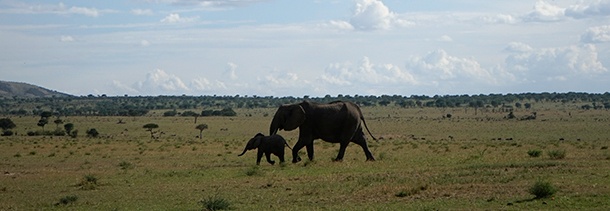Once again, my apologies. The Guardian was kind enough to publish a piece we wrote on saving the wild elephant, something I should have alerted you to back in October. As I say, my apologies – fortunately, it’s still online , so do have a look when you get a moment.
In the meantime, the piece explores the difference between two forms of conservation: fortress and mixed land use. Fortress conservation strategies are those that have found it necessary to set up protected areas designed to either limit or exclude human activity. They are the parks, reserves and private concessions dedicated to saving and growing endangered species. Some are small and concentrate on a limited number of species, others are vast, and are ecosystems in their own right.
Necessary but not, in my view, the long-term answer to wild Africa’s needs, and for two reasons: first, while in part compensated for through work opportunities, grants and various schemes, the local communities that surround and press in on these protected areas are by definition largely excluded; and second, long-ranging species such as elephant outgrow their protected areas, their over-populating of the area working against not just the themselves but also the rest of its inhabitants – owing to their size, elephant can be especially destructive when in search for food and space.

With human population growth and the rise in poaching putting Africa’s wildlife under enormous pressure, we are fast approaching the unthinkable: wholesale restocking of areas with species that once populated them in huge numbers. Alone, fortress conservation strategies may save genetic stock, but they have their limitations. A different and commensurate solution to what in effect is a crises needs finding. The answer, for me, is in the linking up of protected areas by opening up migratory corridors through human habitations, thereby (re)creating the vast rangelands of the past. This is what we mean by mixed land-use conservation strategies.
As examples, the article highlights the work done in northern Kenya by the Northern Rangelands Trust and its local partners and also that of the Kavango Zambezi Transfrontier Conservation Area, which with the help of the Peace Parks Foundation, links 36 protected areas across five countries, and covers a staggering 520,000 square kilometres. However, there are plenty more fine examples of mixed land-use strategies throughout Africa, from South Africa to Namibia to Ethiopia. Its good work, work we’ve traditionally supported via JbD, and which we now much more comprehensively support via our own dedicated charity, Wild Philanthropy.
Clearly, whatever the approach any mixed-land use conservation strategy worth its salt needs to begin and end with the people most affected: the local community. As well as granting animals right of way, and benefitting from having done so, local communities need to be given the opportunity to build on the value of providing the world access to the wild. Their success – the success of eco-businesses, conservation based schemes, the building of eco-infrastructures that provide education, health and opportunity – is key.
So, to finish. Have a read of the Guardian piece and then take a look at the Wild Philanthropy site. If you can see of a way of helping, or would simply like to talk things through, we would love to hear from you.
